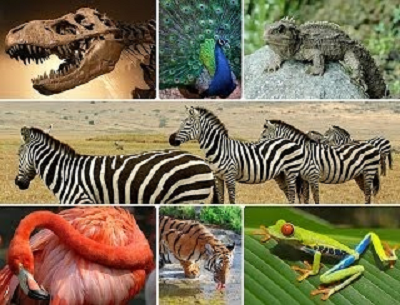Unit 7: The Diversity of Living Things
Unit 7: The Diversity of Living Things

Unit 7: The Diversity of Living Things
 Unit 7: The Diversity of Living Things
Unit 7: The Diversity of Living Things
Scientists use classification systems to help understand the world we live in. Classification is a part of the science of taxonomy. Taxonomy is the science of grouping or organizing things. Whether you realize it or not, you also use classification systems daily. Generally, classification is placing similar things into similar groups or organizing things based on their characteristics or specific criteria. Objects are classified with other objects with the exact attributes (characteristics).
Here is an example. If you had a jar of buttons and you dumped them onto the floor, how would you sort them? By size, color, the number of holes? Perhaps by shape or a combination of characteristics such as large, red, and with four holes.
Another example. You know quite a few people. Some are friends and acquaintances; you have family and relatives you know, teachers, other adults, and some you may even dislike. Notice how these people have been classified.
Classification - Living Things
There are over 1.7 million species of living things in our world. As mentioned, scientists have arranged all living things into a classification system based on physical characteristics. All living things are divided into five Kingdoms, which in turn are divided into phylum, class, order, family, genus, and species.
Vocabulary
Lesson Reading
Videos and Interactives (Click on Images to View Content)

